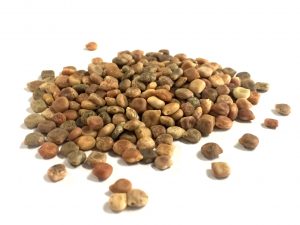Bluebonnets are native to Texas, US. You can see them decorating the roads and the uncultivated areas of Texas with their beautiful blue color. Bluebonnets are among the easiest plants to grow.
In fact, these plants require minimum care, watering, and fertilizing. If you want to decorate your outdoor space with these attractive beauties, follow the below tips for growing Bluebonnets.
1. The best time for growing Bluebonnets

As we mentioned, these beauties originate from Texas where they are usually planted in the Fall. However, you should plant them in the fall only if you live in a hot climate. For cooler climates, it is recommended to plant them in the spring after the last frost ends.
If you plant bluebonnets in the Fall, they will start blooming in the spring. Before sowing the seeds, make sure that the soil temperature is above 55F (12C).
2. Sowing and planting

You can grow bluebonnets from seeds or from seedlings. However, it is recommended that you grow them from seedling as it is a bit difficult to grow them from seeds. Bluebonnets seeds have a hard outer shell which makes the germination process difficult.
For growing bluebonnets from seeds, you should purchase chemically treated seeds because they are already scarified. You can also scarify the seeds yourself by rubbing the seeds against sandpaper or by trimming them with a sharp knife.
Scarifying is important to the germination of the seeds. Without, the chance that your seeds germinate is diminished by 80%. Once the seeds are scarified, you can sow them in a tray or directly in your garden. Either way, make sure that sow them at least 1/4 inch deep. The germination should occur within two weeks.
For growing bluebonnets from seedlings, for each seedling, you need to dig a hole that is as deep and as twice wide as the root ball of the seedling. You should make sure that there are not any debris or weeds in the planting site. Cover the hole with soil and water so the soil settle. It is important that you keep at least 10 inches between each hole.
3. Location
For growing bluebonnets successfully, you need to plant them in the sunniest and the driest spot in your garden. Bluebonnets need to receive at least 6 hours of direct sunlight daily.
They are one of the most decorative drought-tolerant plants thus they require heavy exposure to sunlight.
4. Soil
As long as the soil is well drained and dry, it does not matter whether it is a good quality or a poor quality soil. In fact, these plants do not like a moist soil that is rich in nutrients. Unlike most plants, rich soil may hinder the growth of these plants and results in them developing fewer flowers.
Add some compost and some sand to your soil and it will become ideal for growing bluebonnets.
5. Watering
Since these plants are native to hot Texas, they are used to dry soil and heat. Thus, they are very drought tolerant and they don’t require much watering. Therefore, only moderate light watering is required.
Don’t water when the soil is still moist but rather wait until it completely dries out.
6. Fertilizing

Similar to all low care plants, bluebonnets don’t need fertilization. However, if you think your plants are pale, dull, or week, you can apply a light dose of all-purpose fertilizer to them in spring. This will help them flower and thrive.
7. Pests and Diseases
These plants are disease-resistant. They can’t be infected by diseases. But, there are some pests you should be careful of such as:
- bugs
- snails
- slugs
These are the best tips for growing bluebonnets. Apply these tips and you will have these blue beauties decorating your garden. They are easy to grow and they are almost indestructible plants.

